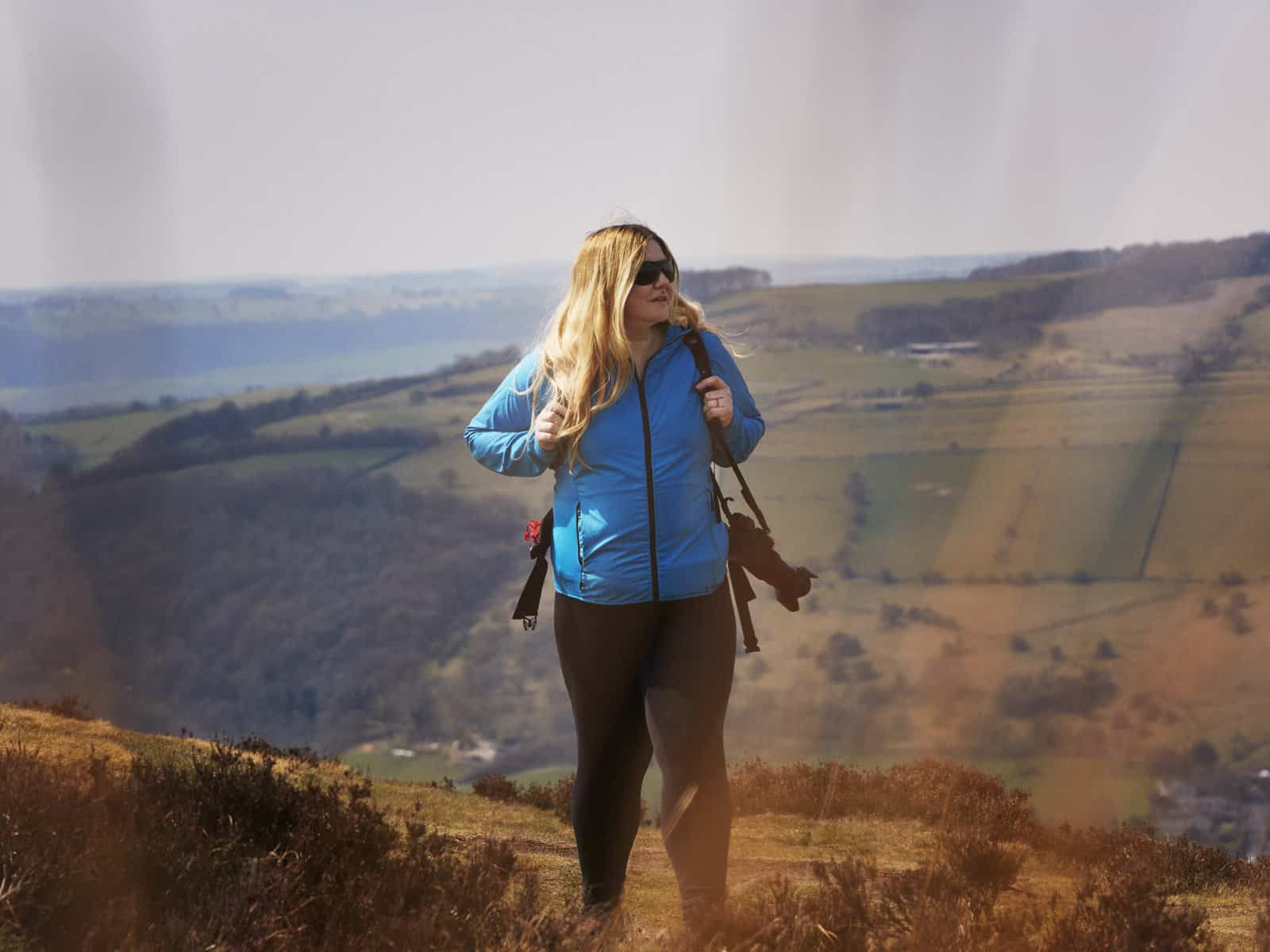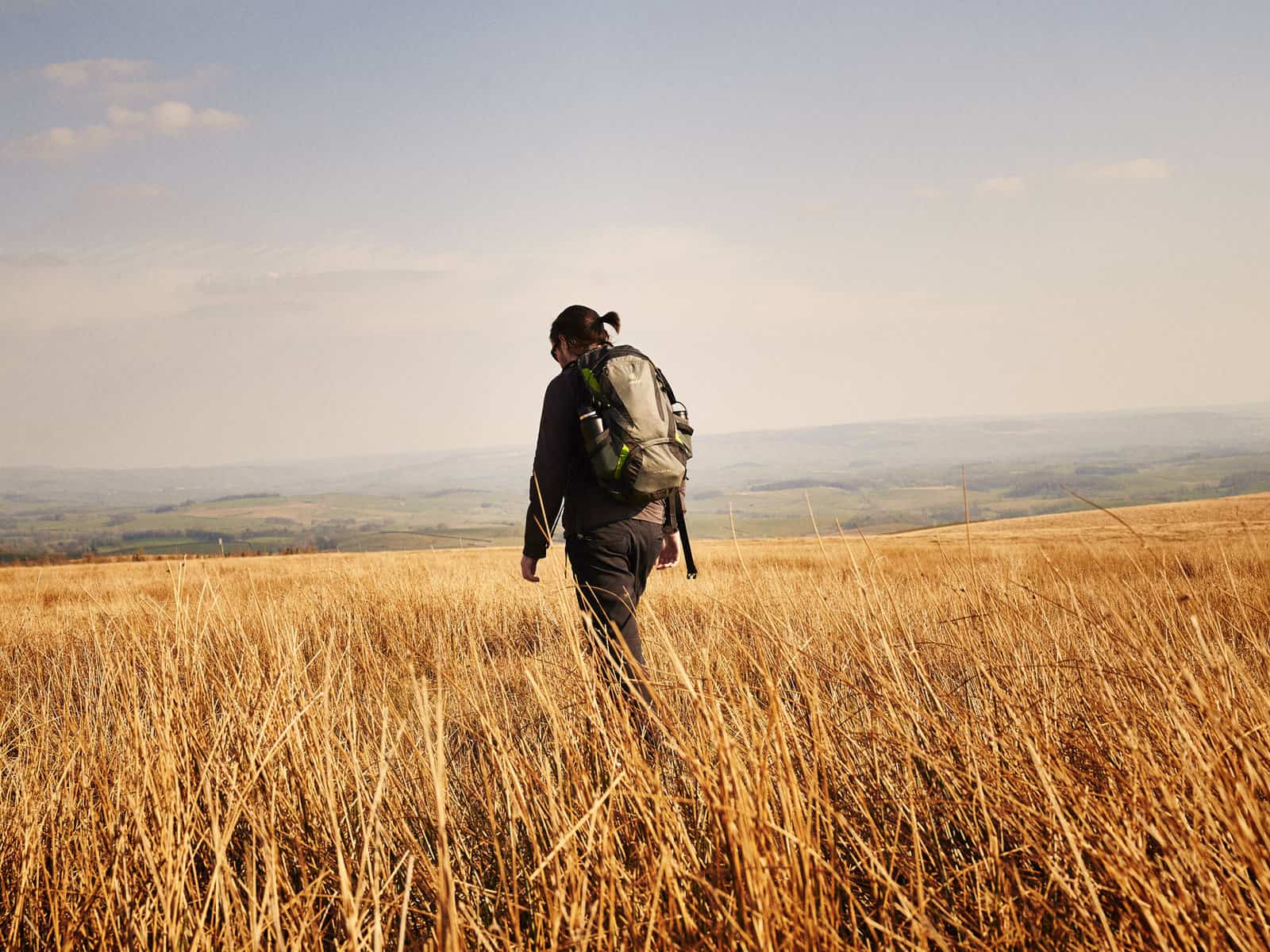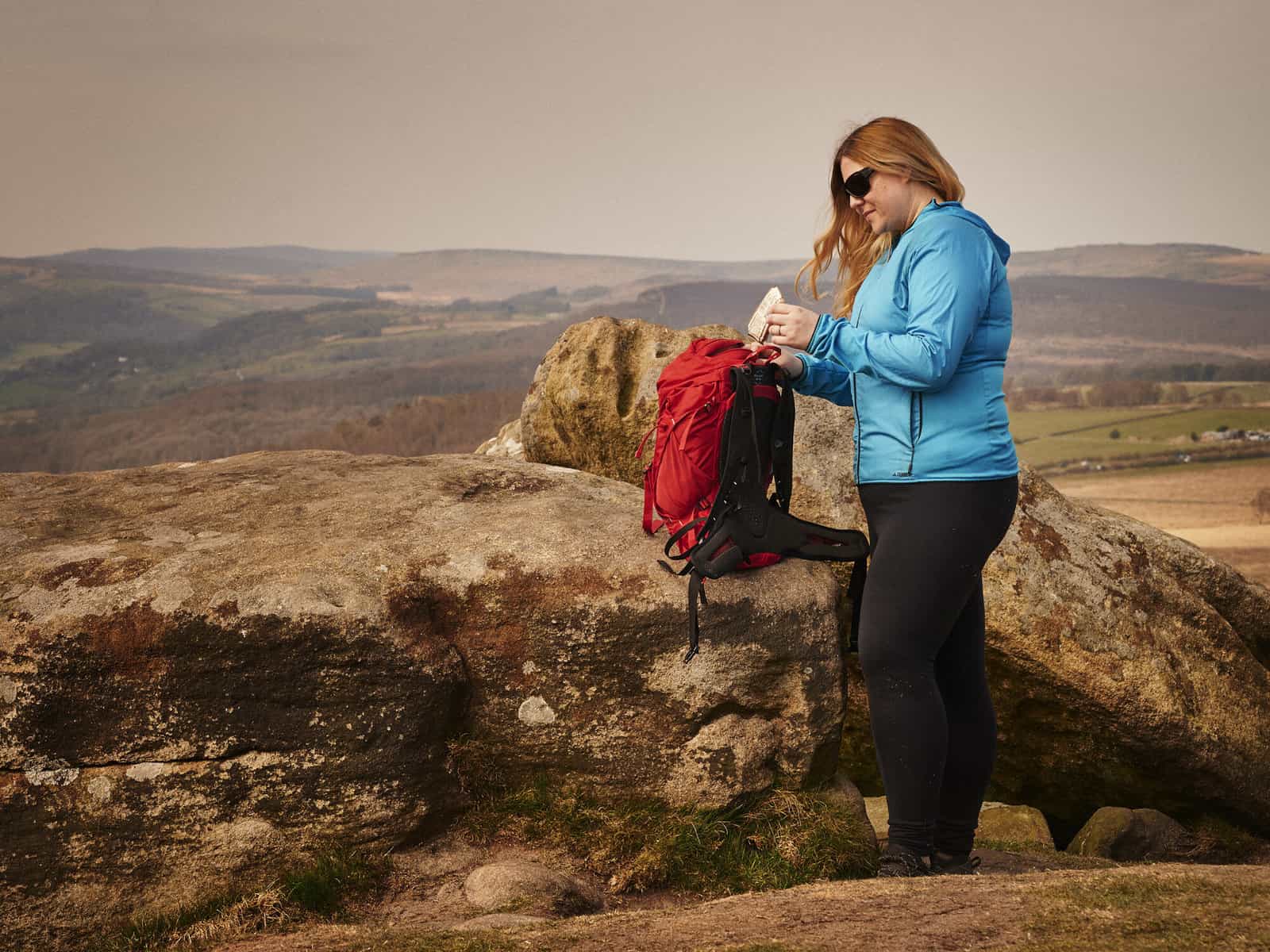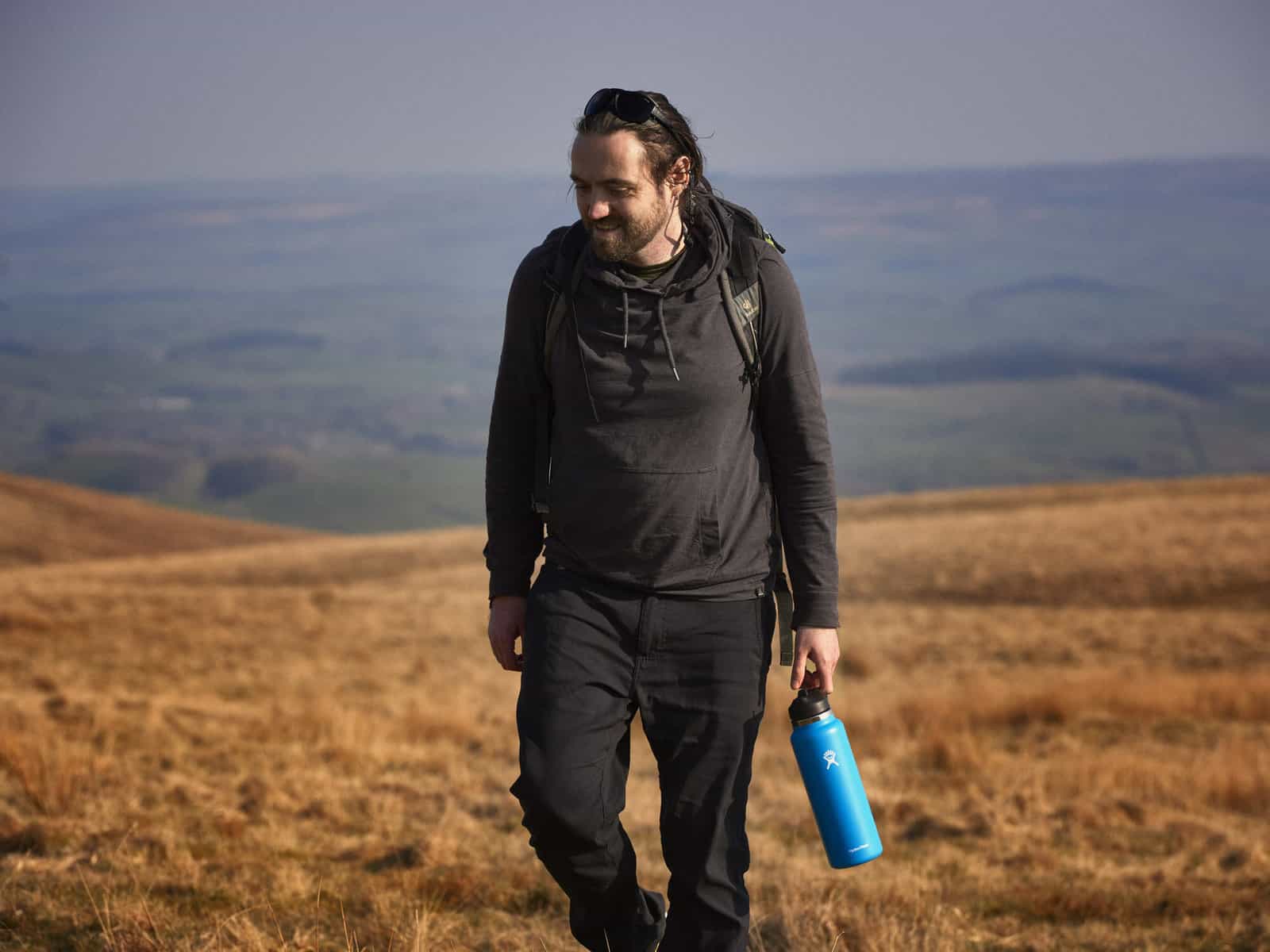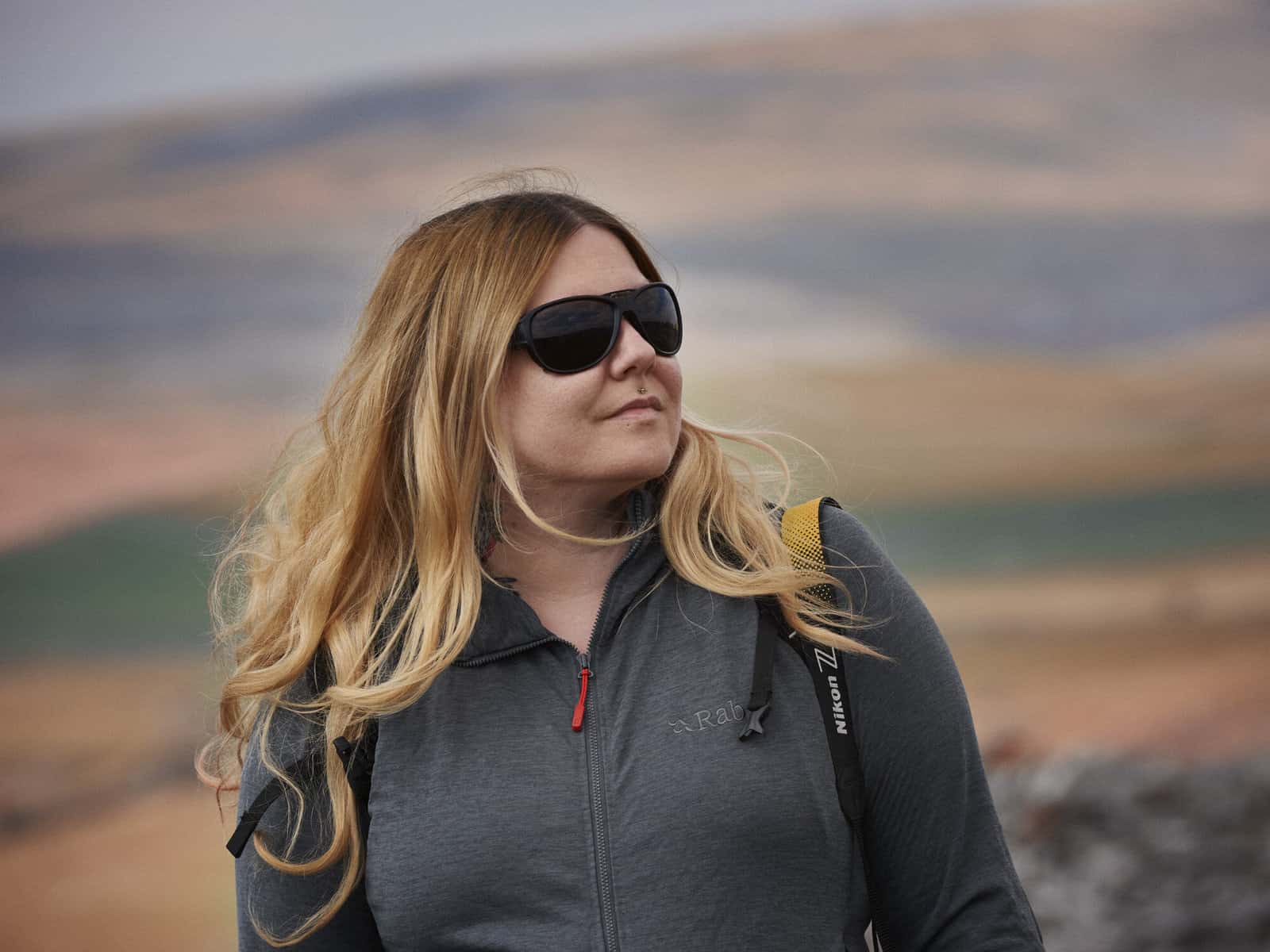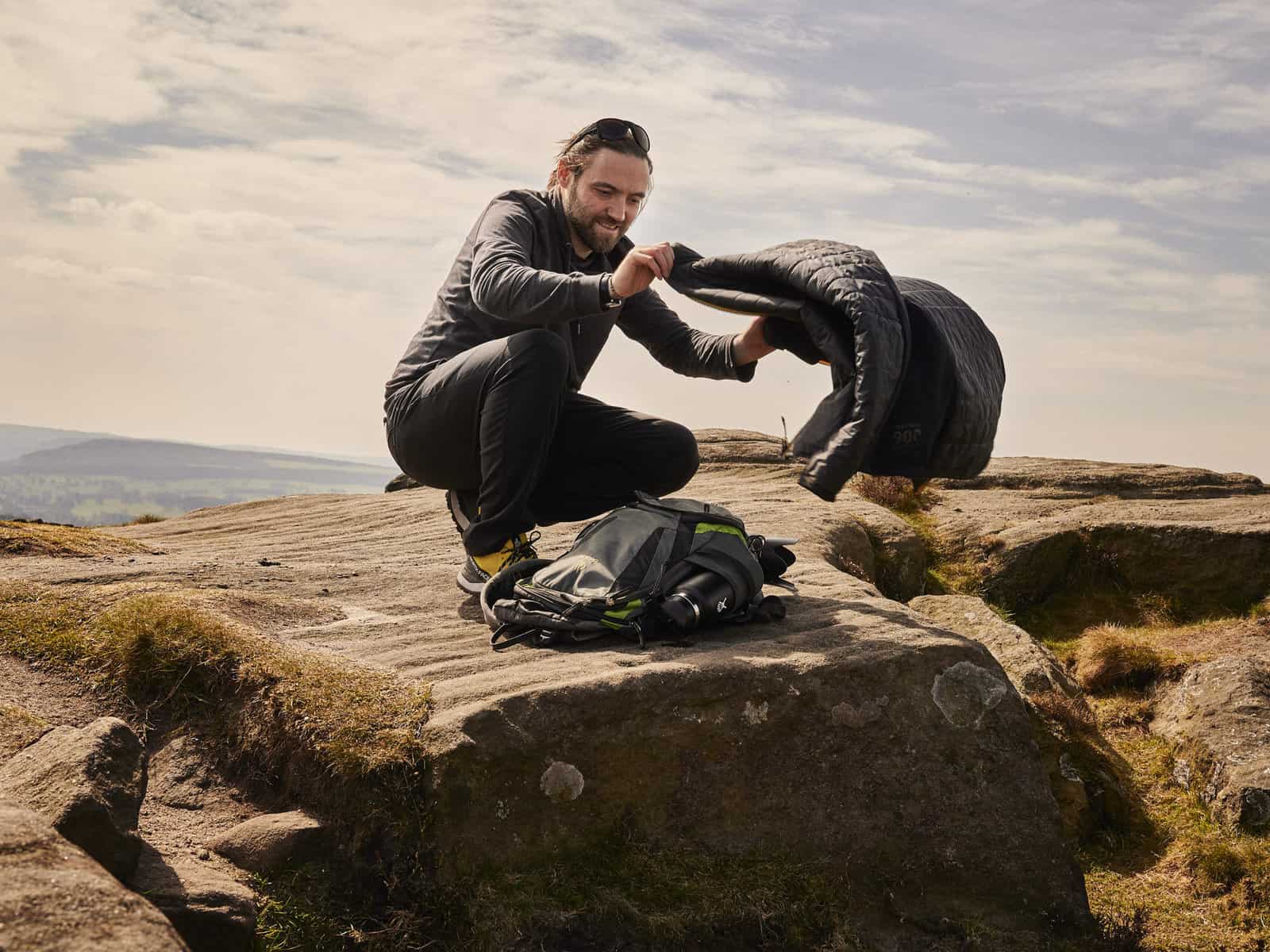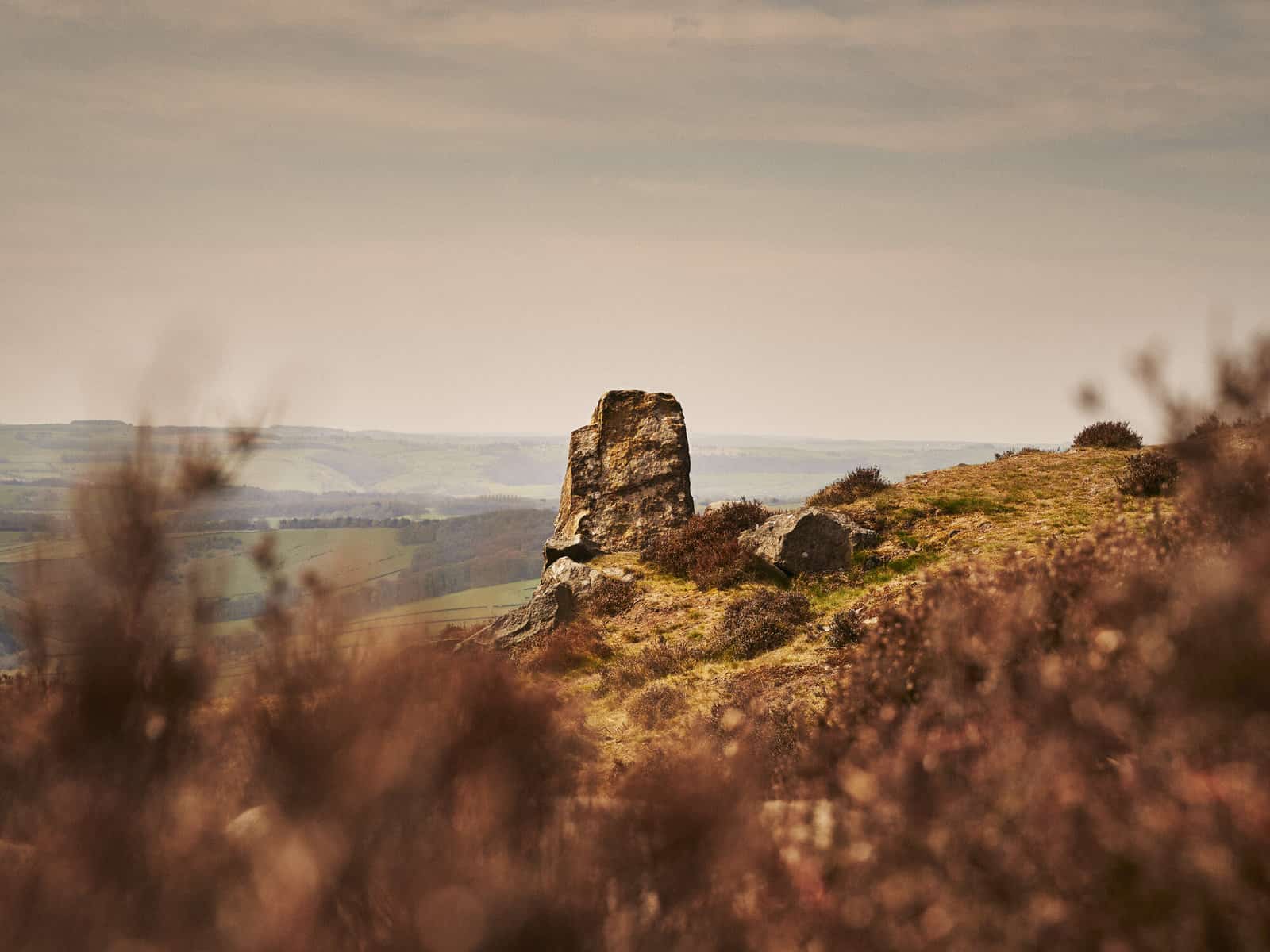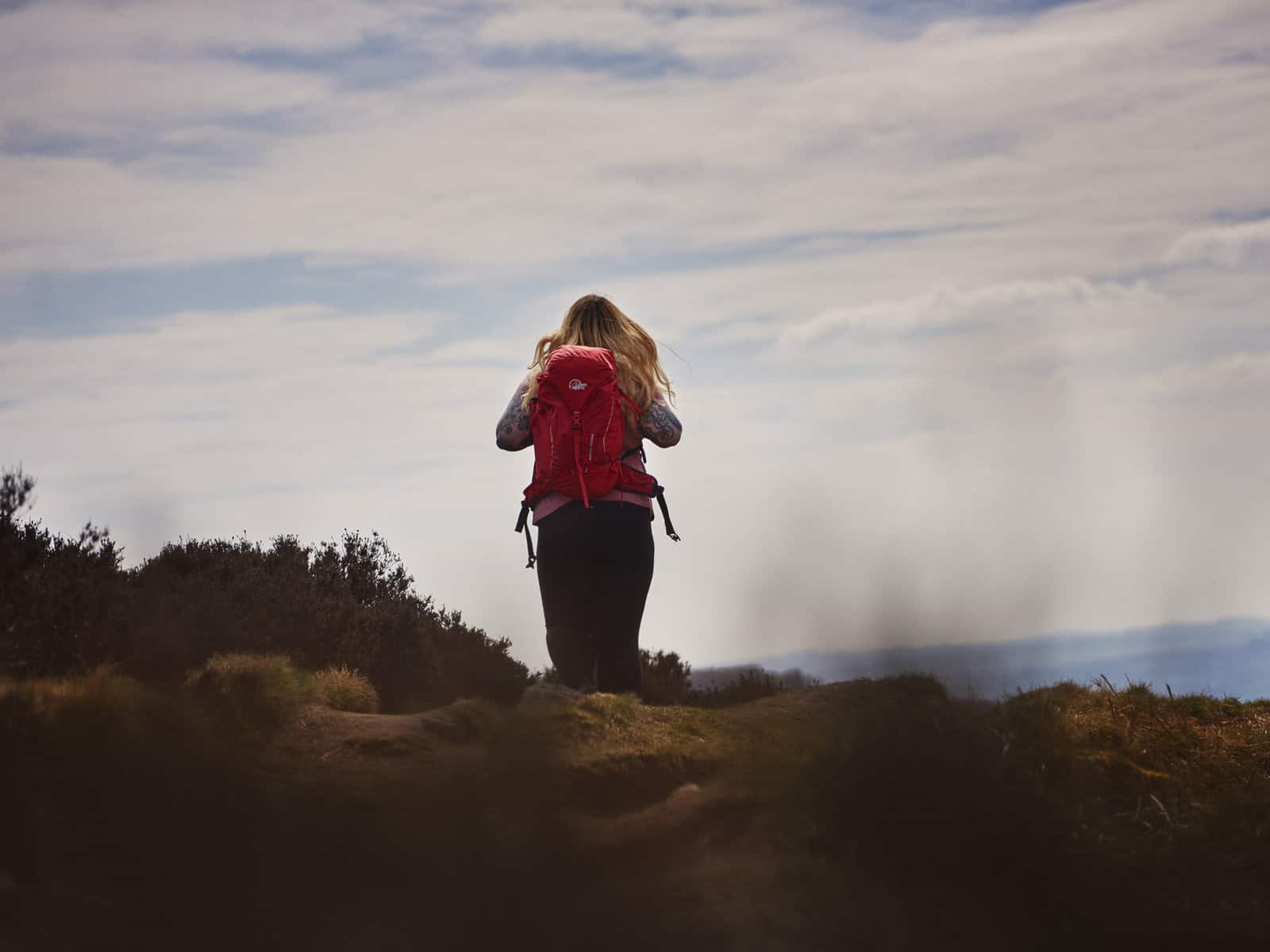It’s fair to say that most people have concern for the environment and the damage being caused by the Climate Crisis. It’s equally true that many of us will be taking steps to curtail our own or our family’s environmental impact.It may not be immediately obvious, though, that even with the best intentions, the time we spend in the outdoors has an environmental impact. In this article, we’ll look at some of the steps that can be taken to help make our experience of the time we spend in nature more environmentally aware.
You might assume that everyone who uses the outdoors shares a positive attitude towards the environment and conservation, but sadly this is very far from the truth.Outmoded attitudes towards nature are still surprisingly prevalent and it can be saddening to see how these can impact our environment. This is also true when it comes to land management, leave no trace principles and the understanding and education of ancestral and historical lands.
Matt used to cycle a lot – particularly long-distance road cycling and from time to time he’d participate in Sportive events – these are organised group rides over a fixed route.For the entry fee, the organisers usually provide on-route mechanical support and usually fixed refreshment stops too. It’s not uncommon to have boxes of free energy gel samples ready for riders at these stops.If you’ve never experienced a pre-packed energy gel, they are generally a small foil container containing a sugar and carbohydrate-rich gel.The idea is that you bite the top off and drink them on the move – if you ever watch a cycle race, you’ll see the riders drinking them to keep their energy levels up.Sportives are not formal races, but that doesn’t stop competition – whether it’s friends racing against each other, or an individual trying to achieve a certain finishing time – this means entrants will stop, pick up some food and then set off again immediately, eating whilst riding.Sadly, it seems that enough of these riders will dump half-eaten food and packaging once they are finished. Often, the first kilometre or so of road after a feed stop in a Sportive event will be littered with food debris and packaging and it is particularly energy gel wrappers that seem to show up.
ID: A landscape image. Fay is walking centre of the frame up a hillside. In the foreground are out of focus hazy grasses. In the background are steep hills. The ground is green and brown. Fay is wearing black trousers, blue jacket and black sunglasses. A black camera is over Fay’s shoulder.
The contradiction here is obvious: we have a group of people who obviously value their time spent in nature and yet, at the same time, seem to see little if any problem in dropping items of litter that are non-biodegradable and are likely to stay in the environment for decades, if not centuries to come.Beyond the environmental impact, this litter causes hazards to other riders too – we’ve anecdotally heard of people skidding as they ride over the slippery discarded gel packets.
We don’t want to single out road cycling here: We’ve doubtless all seen beauty spots heavily littered after a weekend of good weather or evidence of abandoned camp sites with scorched ground from fires whilst on hikes (of course, we should take a moment to acknowledge the vast majority who camp and wild camp responsibly).It’s easy to dismiss this as the behaviour of a few, but we must ask ourselves where this attitude – this seemingly contradictory view of nature – comes from?
We’re likely all familiar with the mantra of ‘Leave No Trace’ – the concept pretty much explains itself, but, whilst the movement has its origins in the US in the 1950s and 60s it wasn’t until 1987 that it was used as the centre of an official campaign by the three bodies that administer most of the public land in the US: The US Forest Service, The National Park Service and The Bureau of Land Management.Beyond this, it wasn’t until the 1990s that it became enshrined in official policy for these same organisations.
ID: A landscape image. Matt is walking away from the camera. In the foreground is long yellow grasses, which obfuscate the trail Matt is walking on in the background. In the background, we can see hills that are hazy in the bright light. The sky is blue. Matt is wearing a grey and green backpack, black trousers and a grey hoody.
Prior to Leave No Trace, the prevailing attitude in the outdoors was broadly defined as ‘Woodcraft’ – the idea that when in nature you should actively rely on the resources nature provides to sustain yourself.Philosophically, nature was viewed as an infinite resource that was there for us to make use of as we wished and that it could simply ‘absorb’ any impact we had on it.This concept had no issue with cutting firewood, burying or simply discarding rubbish – quite the opposite to Leave No Trace!In the 1950s and 60s, attitudes started to change – there was a realisation that nature could not always ‘bounce back’ and that conservation and preservation was vitally important.
We should note that Woodcraft has not gone away, but has rather evolved and there are many people out there practicing it in a sustainable way that is, by and large, compatible with contemporary Leave No Trace ideas.
Early seasons of the TV series Mad Men are set in 1960s America.One of the most successful devices used in the series is to show how alien – and disappointing – certain aspects of recent history are from a modern viewpoint: racism, sexism, abuse; Children playing by placing plastic bags over their heads in front of parents who see no problem in this.In another scene, the central characters – the Draper family (a seemingly ‘respectable’, middle class family) – eat a picnic in a park.As they get up to leave, the father throws his beer can into the bushes whilst the mother picks up the picnic blanket, shakes off the food packaging and paper plates and they walk back to their car without blinking an eye.
ID: A landscape image. Fay stands to camera right and is wearing black trousers, blue jacket and black sunglasses. Fay’s bag is perched on a rock and the red backpack is open. Fay is putting an empty food wrapper into the top of the bag. The rocks are mossy and slabbed together. In the background are low lying mountains. The sky is a milky orange/red.
In some ways, scenes like this seem troubling. These comparisons to the recent past can be quite disorienting: we see a world portrayed that is at once very familiar, but also completely different to what we expect.It’s easy to take the moral high ground here. Look how far we have come!We have a better-developed understanding of conservation!We would never behave like this!But these comparisons also give us space for reflection – how far exactly have we come?How much of the older, more destructive ethos still informs the way we interact with nature?When people look back on our time from sixty years in the future, what aspects of our behaviour and attitudes towards nature conservation will seem shocking?
In the strictest sense, Leave No Trace is incompatible with the ways many people enjoy and experience the outdoors, but, realistically, this compromise is the best thing we have.Perhaps, however, we can look to make small, but none the less significant changes to the way we interact with nature to align ourselves more with the principles of Leave No Trace.These changes might include considering how we get to our hikes: can we car pool or use public transport to minimise not just pollution but also congestion en-route?Once we’re on the trail, we should examine just how closely we are following the principles of Leave No Trace – are there small details in our behaviour that are actually damaging to the environment? Are we acting mindfully with regards to the special conservation requirements a certain place may have? Within this, there is a great opportunity for reflection – especially when we look to our own privilege, around education and access.
All of this feeds into our next point: overloading infrastructure.What exactly does this mean?Let’s consider the infrastructure we are used to in our daily lives: if we’re walking down the street we can throw litter into a bin.But the bin alone is not the whole infrastructure – there’s also the supporting service that goes with it: someone coming along and emptying that bin, and then the waste being transported to a recycling centre or landfill.Continuing with this example, generally speaking, we can be sure that this bin will subsequently be emptied on a regular basis.It’s probably safe to say that most people don’t even think about these things – they are just taken for granted.But how do these assumptions transfer to more remote locations?The carpark at a mountain trailhead may have a litter bin present, but how often is it emptied?Even if the bin is not overflowing, is there a chance that litter left in the bin might blow out or be pulled out by animals, thus polluting the environment?Even when the bin is emptied, what happens to the waste?In an urban setting, it might go to a recycling centre, but in more rural areas, do these facilities exist or will it all just go to landfill and is that landfill site sufficient for the volume of waste going there?
ID: A landscape image. Matt is in the foreground and central in the picture. He has his head turned to one side and is smiling and holding a blue reusable water bottle. He is wearing black trousers, grey hoody and a grey strap of a backpack can be seen. He wears black sunglasses on his head. The hilly ground he walks on is golden and grassy and in the background are blue tinted mountains and a dark blue sky.
Our impact on an environment in not just defined by what we do when we visit there, but also by what we leave behind and how this impacts not just the place we visited, but also the locations that provide the services to that place.The 2018-2019 Federal government Shutdown in the US was a prime example of how quickly infrastructure resources can become stressed and overloaded.With National Park staff furloughed and legally forbidden from working, rubbish bins and vault toilets in National Parks rapidly overflowed.
This problem is compounded in areas that are both very popular and very remote: At the extreme end of the scale, the garbage crisis on Mount Everest is well documented, and is the product of inadequate infrastructure to support the number of visitors entering the region. Beyond the immediate impact of trash mountains appearing in one of the world’s most remote places, the climate crisis is causing Everest to warm up – this has led to human waste contaminating the water table presenting a health threat to thousands of Nepalis who’s drinking water originates in the glaciers of the high Himalayas.
Unique problems demand novel solutions.It obviously is not safe or realistic to implement a regular garbage collection service on the upper slopes of an 8000m mountain, but this does not have to be the only solution to the problem.Since the 1990s, the Nepali government have incentivised expeditions that actively remove waste from the mountain and a garbage deposit scheme has been implemented: Expeditions must pay a $4000 fee which is only refunded if each member returns carrying 8kg of rubbish. Further more, the Sherpa guides who accompany every expedition and who arguably know the mountains best, have been incentivised to help remove waste from the highest parts of the mountain.Beyond this, the human waste problem is being tackled with novel schemes to produce biogas which can be used to generate electricity for the (often very poor) communities further down the mountain.None of this is to say that the clean up of Everest is an unmitigated success story – it doesn’t take much Googling to find substantial criticism of the implementation of the scheme and, of course, many have suggested that the Nepali government compounded the issue by ignoring it for too long (which we of course need to look at through a lens of just inclusion and environmental segregation).None the less, we can see that solutions tailored to a specific place or set of problems can be successful and the high-profile lessons learned on the slopes of Everest can be transferred to your local parks or wilderness areas.
ID: A landscape image. A close up of Fay with head turned to the right. Fay has hair down, is wearing a blur zipped up jacket, yellow camera strap is on the right hand side and is wearing black sunglasses. Fay smiles. In the background is blown out mountain scenes – but it is hard to make out. There are colours of green, brown and pinks in this.
But litter is not the only signifier of overloaded infrastructure.We must also consider how increased human presence has impacted the landscape in other ways: one obvious example here is damage caused by increased foot fall: whether that’s ‘unofficial’ trails cutting across previously pristine landscapes, erosion or degradation to existing trails or damage to fragile ecosystems, all of these issues and more can often be traced back to increased human presence.
The government bodies that look after public land are often chronically under-funded and, if a particular area becomes popular – perhaps through location tagging on social media and in some instances due to a lack of other access or further access issues in the area – then there may not be the financial resources available to provide infrastructure suitable for the number of people visiting. This presents its own problem: we want people to enjoy nature – people absolutely have a right to it – but too many people in a certain place can irreparably harm the landscape and ecosystems.Sadly, we’re all too familiar with locations where it’s impossible to tell the official trail from others that have sprung up around it. We’ve also witnessed countless situations where people have ignored signage instructing them to stick to trails to get to particular vantage points or to take short cuts to a beach – in some cases putting themselves at substantial risk in the process. In recent times, COVID-19 has introduced its own unique set of problems: attempting to maintain social distancing when passing other hikers on narrow trails in all but impossible and this, in turn can lead to environmental harm in biodiverse areas.
Once again, there are no clear-cut or one-size-fits-all solutions here.A few years ago, we remember a campaign urging people not to add location tags to their social posts to help preserve fragile locations.Whilst we can completely understand the sentiment here, this campaign did sit uneasily with us.Since we started This Expansive Adventure, we’ve always advocated for inclusivity in the outdoors.That nature should be for everyone and, sadly, the no location tags campaign had more than a passing hint of the kind of elitist gate-keeping attitude to the outdoors we have always spoken out against.Whilst you can argue that location tagging has caused great damage to certain places, you can just as easily argue that it has increased interest and awareness in nature.Social media has enabled a whole new generation of people to connect with and become passionate about the preservation of nature – and this is absolutely a good thing!
Ultimately, we need to find a balance: the best way to perfectly protect natural environments would simply be to leave them alone, and not visit them at all, but we know this is not a workable solution and, accepting that people will visit and therefore impact natural spaces, we need to find the best way to balance our presence so it leaves the least possible impact.Perhaps Leave No Trace is impossible in the strictest sense, but we can absolutely learn to leave the least trace.
ID: A landscape image. Matt sits on a rocky outcrop taking his coat out of his backpack and opening it out. Whilst he does this, a gust of wind has blown the edges away. He is crouched down over his backpack which is grey and green. He is wearing yellow hiking shoes, grey hoody and black trousers. The rock he is sat on is grey/brown and has mossy outcrops on it. In the background is a blue and slightly cloudy sky.
We believe the solution lies in education and making informed decisions about what we are comfortable doing in the outdoors.We cannot stop people from ignoring information signs, but perhaps changing attitudes, a better sense of equity and a sense of ‘meeting people where they are’ is a potential way forward here?Sadly, none of these things are quick fixes, but with increased education – and we believe that this is absolutely something that needs to be started early and built into the national curriculum – we will undoubtedly see positive change.
For now, we put this into practice by trying to earn about the places we plan to visit: are there any specific environmental concerns we need to be aware of? If the trail appears to be packed, or the car park is full, are there alternatives?
Any commitment we make to minimise our impact on natural spaces can extend beyond the time we spend in them.Positive environmental stewardship can play into the decisions we make about the products we choose to buy.On a direct level, we can consider the clothing and equipment we choose to buy for our time spent outdoors. Are the clothes we buy produced from responsibly sourced materials and manufactured in ethically sound conditions? Are the technical garments we choose to purchase likely to be shedding micro plastics with every wash?Have the manufacturers committed to carbon and/or plastic neutrality?
ID: A landscape image. In the foreground are some mossy, plants and flowers which have a purple red haze. In the mid ground is grassy land with rocky outcrops. There is a rock spire in the centre of the image. In the background are low lying and rolling mountains which are green and browns. The sky is a milky blue/pink.
Many brands – and especially so with brands that provide clothing and equipment for outdoors activity – claim to be environmentally responsible, but just how much they actually are can be tricky to judge. ‘B Corp’ Certification – an independently assessed set of environmental, public and legal transparency targets and criteria to which businesses can sign up is a good place to start, but this should not be the only factor that informs your purchasing decisions and we do, of course, urge you to research any brand you buy from to ensure you are comfortable with their ethics and practices.
Of course, these statements all come with a substantial dose of privilege and we can’t forget that many people’s purchasing decisions cannot be based on a company’s ethics alone: Budget and – especially so in the outdoors – specific technical requirements you might have for a product play a major role for most people.At the end of the day, practical factors like these have to come first in most instances, but even so, there are still ways you can address environmental concerns through your purchasing. We take a very pragmatic approach to technical clothing and equipment: first of all, it needs to be suitable for the job in hand and second, we want it to be versatile, so it can be reused – maybe in different configurations – for as many different types of activity as possible.We also try to optimise the longevity of our gear as much as we can – we try to repair rather than replace damaged gear.Matt’s main hiking boots are close to twelve years old, for instance.When they started leaking, it seemed only logical to get them resoled rather than replacing them.They obviously won’t last forever, but they still have plenty of life left in them and Matt has no plans to replace them any time soon.
Ultimately, there are many ways that we can make small changes to our lifestyles, attitudes to the outdoors and purchasing decisions that can all contribute towards reducing our environmental footprint and impact.We firmly believe that our time spent in nature is not just about enjoying what we do there (though obviously, this plays a major part!), but also about taking responsibility for the spaces we enjoy and adopting a responsible attitude towards their stewardship and conservation.The smaller details and ‘life hacks’ that promote positive change to those who learn about them are an essential part of this.Perhaps if we can start to learn to lessen our impact on the environment and improve our relationship to it just a little, it can nurture the positive change we will need for the future.
ID: A landscape image. Shallow depth of field in the foreground blows out a number of shrubs and plants on the rocky path. In the middle of the image, Fay is walking with back turned to the camera. Fay wears black trousers, pink sleeveless top and red backpack. In the background is a blue slightly cloudy sky.

